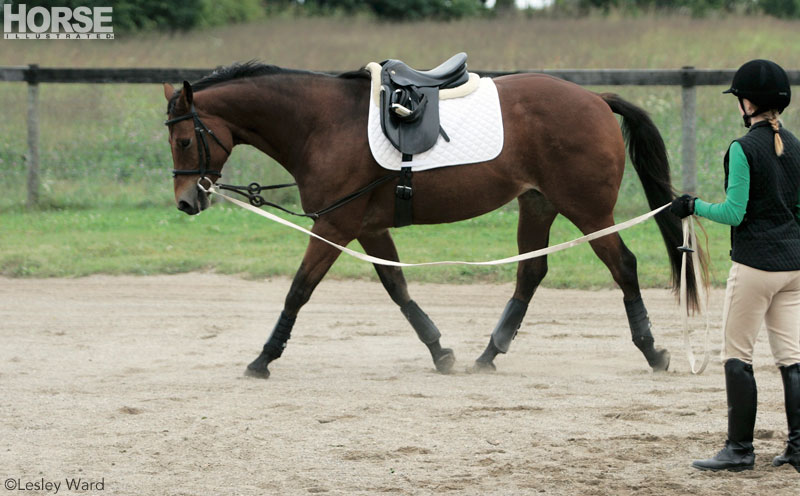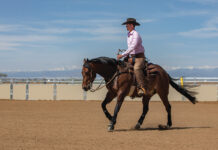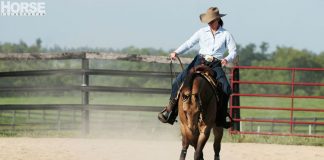
When longeing in a bridle, the longe line can be attached in two basic ways. You can pass the line through the inside bit ring (closest to the handler), over the horse’s poll, and then attach it to the bit ring on the opposite side. Or you can run the line through the inside bit ring, under the horse’s chin and attach it to the bit ring on the opposite side. Remove the reins, or secure them by placing them over the horse’s head and twisting both reins from bit to throatlatch; pass the throatlatch strap through the reins and fasten.
Many trainers like to use the Pessoa longeing rig, which operates on a pulley system and encourages the horse to use his hindquarters and is useful for setting the head. Another option is to use side reins, with a surcingle or a saddle, which can help the horse learn to carry himself in a balanced manner. If you’re not sure how to adjust, have an experienced horseperson help you.
Trainer, coach and competitor Lynn Palm recommends using a flat cotton longe line, never nylon, which is slippery, twists easily and can burn your hands. “You often see people with the longe line tangled in loops around their hands,” she says. “You should have the line ‘stacked’ in your hand in large loops so it doesn’t get tangled.” It’s also a good idea to wear gloves.
Use protective leg gear, such as splint boots or polo wraps, to protect the horse from injury due to over-reaching or brushing.
The longe whip acts as an extension of your arm, keeping the horse out on the circle and encouraging him to move on. “Practice using the whip and keeping your longe line organized before you get out there with the horse,” Lynn encourages.
Read on for tips on safe longeing >>







I found it kind of general. But good for newbies at it.
This article was very helpful to me. I never knew some of the things it taught me. I think it was well written.